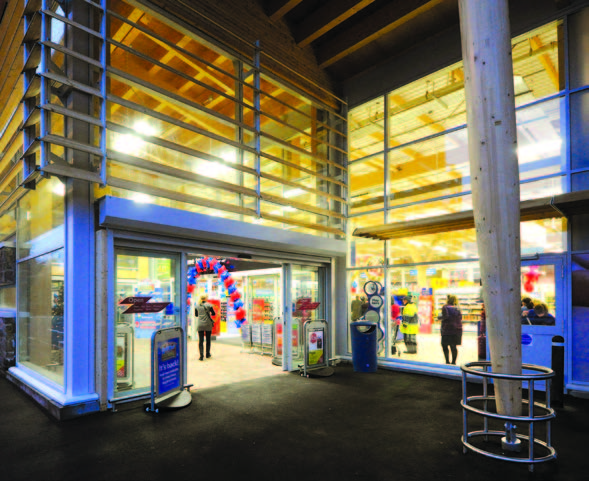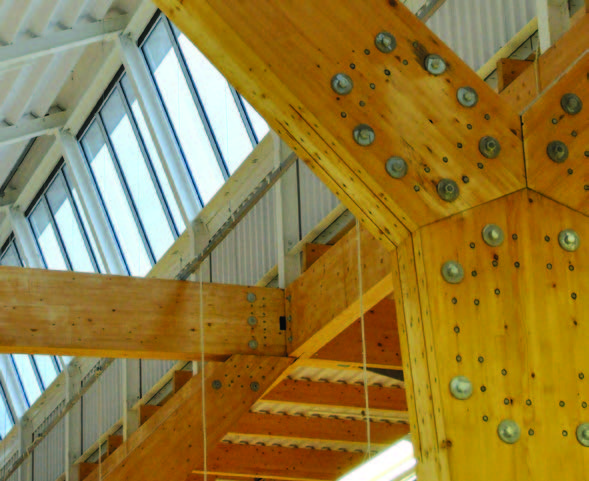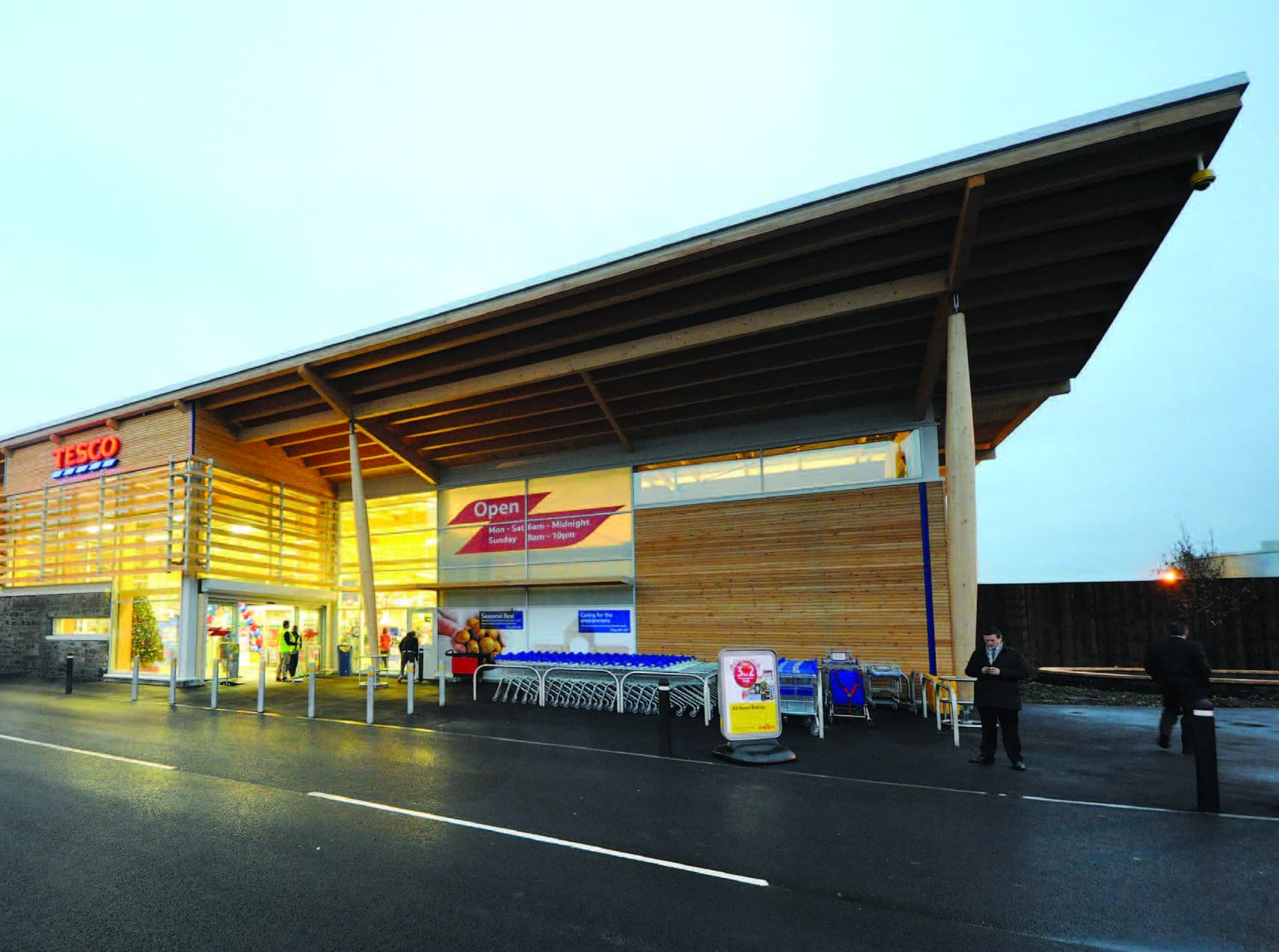This 4,500 square metre bespoke superstore on the eastern edge of Banchory was designed to reflect the area’s wooded setting. It used timber and a range of green materials for its main construction.
Due to the rural location of the building, sustainability was a key factor in its design. Natural materials from sustainable sources were used as much as possible to minimise its impact on Banchory’s natural surroundings.
The building also uses energy-efficient measures to reduce its carbon footprint both during and after construction.
Timber qualities
Most large supermarkets use a steel skeleton for their internal structure. In this case, the building uses a glue-laminated structural frame, made up of massive spruce timber beams and joists to support the walls and roof. These were prefabricated and cut to size offsite and then joined together as an assembly kit using steel bracket connectors.
The building has a timber canopy in a raked and fluted shape which makes the store look inviting. The external walls are prefabricated timber cassette panels, finished externally with profiled Siberian larch cladding. Timber-bladed larch ‘brise soleil’ (permanent exterior bladed sunscreens) also adds as a functional decoration to the exterior of the building.

Special timber-related features
By using timber, the carbon footprint of the building frame is approximately 13% of a normally constructed steel framed store. All requirements are met more economically, ecologically and efficiently.
The timber construction also enabled a very short installation time of only a few weeks. Due to the low weight of timber, it was also possible to carry out much of the pre-assembly works on the ground, then lift them into place.
The building also uses other ‘eco-initiatives’, such as skylights to maximise natural illumination of the store and rainwater harvesting.
All timber used in the glue-laminated structural frame is Programme for the Endorsement of Forest Certification Schemes certified and purchased from sustainably managed forests.

A library of sustainable building materials
Our website includes a web-based resource that showcases sustainable, traditional, innovative, recycled and low carbon building materials. If you are looking for inspiration or information on different types of materials to consider for your project, visit our materials library.

